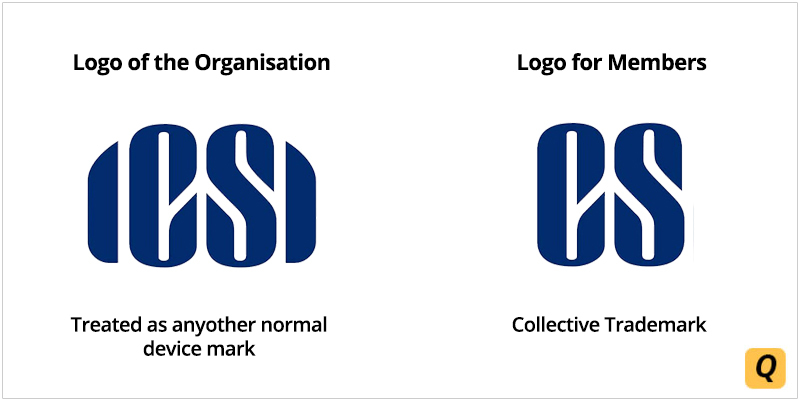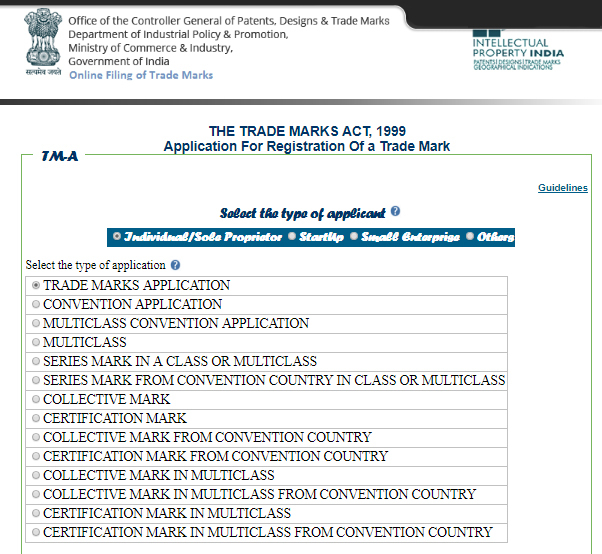Meaning of Collective Trademarks in India
November 14, 2018 by Akshara Bala
Like any other type of trademark, collective trademarks can also be in the form of words, letters, numbers, names or logos. However, unlike a traditional trademark that represents goods and services, a collective trademark represents an organisation or its members.
Since collective trademark usually refers to an association or its members, it can help the public identify a particular characteristic, a geographical origin, a level of quality or qualification.
Key Characteristic of Collective Trademarks
No Individual Use
Unlike traditional trademarks, the collective trademarks, as the name suggests, is not restricted to the use of a single individual. It can be used by a collection/group of individuals, as long as they are members of the organisation.
Example
The CS qualification logo is a collective trademark that belongs to the Institute of Company Secretaries of India. This should not be confused the institute’s own ICSI logo, which is to be regarded as any other device mark.

While the CS qualification logo, since it is a collective mark, can be used by any qualified Company Secretary, as long as they are registered member of the institute. You can find this logo used in the visiting card and name boards of most practising company secretary.
Functions of Collective Trademarks
The Indian Trademarks law in India clearly distinguishes collective marks because it performs a different function.
Section 2(1)(g) of the Indian Trademarks Act,1999 defines collective trademarks as:
A trademark distinguishing the goods or services of members of an association of persons, which is the proprietor of the marks, from those of others.
The primary purposes of the collective trademark are to:
- Educate the public about a specific feature of an organization, its members, their services and products, for which the mark is used.
- Help different the quality of one organization from the other, including its members and its products and services, if any.
Types of Collective Trademarks
The common types of collective trademarks are those:
- Those used by Members of an association
- Those marks registered by an association or corporative
- Marks that are used as Geographical Indicators.
What are Geographical Indicators?
One of the main types of collective marks is geographical indicators. These type of collective marks helps promote and protect the distinct origin of the goods. Therefore the products not only gain national reorganization but can also benefit in the international markets.
Registration of Collective Trademarks in India
Registration of collective marks can be done through the online portal of the IP India, by selecting the Collective Trademark form.

Requirements while filing
The following details would need to be added by the applicant while filing for a collective mark.
- Basic details of the association including name and office addresses.
- The objective of the association
- Details of membership and types of persons authorized to use the mark, including conditions of membership
- Conditions of use of the collective mark
- Manners in dealing with misuse
- Precautions against unfair use of the mark
Essentialities of a Collective Trademark
The Indian Trademarks lays down certain essentialities for the registration of Collective Trademarks in India. These mandates are as follows:
- The registration of a collective trademark will be disallowed if the Registrar finds that the mark would be perceived as something that is other than a collective mark.
- Therefore, the active part of the trademark registration application must contain something that is clearly indicative of the collective nature of the mark.
- Similar to any other trademark, a collective mark cannot be registered if it is non-distinctive, deceptive, or is likely to cause confusion in the market.
Grounds for Removal of a Collective Trademark
A collective trademark will be removed from the Trademarks Register on the following grounds, as laid down by Section 68:
- When the mark misleads the public
- Non-use of the mark as a trademark as under Section 47 of the Act.
- When the mark is descriptive in nature as under Section 36
Infringement of Collective Trademarks
In case of infringement, Section 67 provides that, the registered proprietor can file a suit for the same. In such a situation, the deciding Court will consider the losses of all the authorized users of the mark, and can order for pecuniary remedies to address the same.